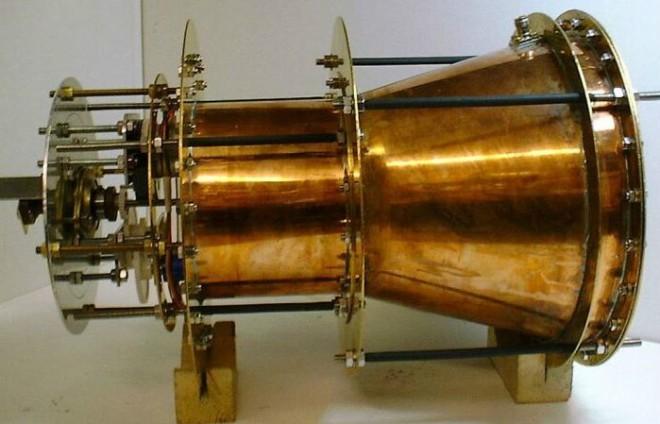
Paperwork for the spacecraft Electromagnetic Drive, popularly known as the 'EmDrive', which is believed to be fictitious so far has been submitted by the NASA Eagleworks Laboratory team.
The scientists have previously stated that this spaceship can aid astronauts in travelling to Mars at a fast pace within a few weeks, which takes usually takes 150 to 300 days.
The paper is peer-reviewed and was finally published on November 17, 2016 with the title, "Measurement of Impulsive Thrust from a Closed Radio-Frequency Cavity in Vacuum" in the Journal of Propulsion and Power.
This paper reveals how the space scientists have tested the technology for generating more thrust in the EmDrive spacecraft.
Grapevine about EmDrive craft being labelled as an impossible creation by the physicists, has been doing rounds. The release of the new paper points towards NASA's involvement in the technology.
This concept was spearheaded by a British researcher named Roger Shawyer in the year 1999. He stated that bouncing microwaves inside a cone-shaped chamber can produce thrust.
This spacecraft apparently goes against Newton's third law of motion which states: Every action must have an equal and opposite reaction. The EmDrive lacks the exhaust to drive out as an opposite reaction. Superheated gases and other materials are ejected from the nozzles of rockets in conventional propulsion.
The EmDrive stands out because of is its unique propulsion which eliminates the requirement of any rocket fuel. The pioneer of this technology, Shawyer, stated that this craft can make humans reach Mars in just 70 days.
The paper revealed that:
- A frequency resonant cavity thruster was created by the Eagleworks Laboratories
- This resonant cavity thruster had the ability to produce 1.2 millinewtons per kilowatt of thrust in vacuum.
- Electricity was used by NASA to create and bounce the microwaves in a close copper cone.
The functioning of the EmDrive still remains a mystery; a controversial explanation quantum mechanics is being used in the study to narrate this it.
Harold White the principal investigator along with his colleagues also calculated the thrust. It was found that this spacecraft had 1.2 millinewtons of force per kilowatt of energy, which is comparatively 100 times greater than a regular solar sailing spacecraft.
"Unlike solar sails, the EmDrive takes no propellant, with the microwaves coming from the power of solar panels," Harold White the principal investigator said, as per a Tech Times report.
"The best part is that EmDrive can render space travel cheaper and faster. However, there is still a long way to go as EmDrive is in a proof-of-concept mode and requires further validation," White said further.















